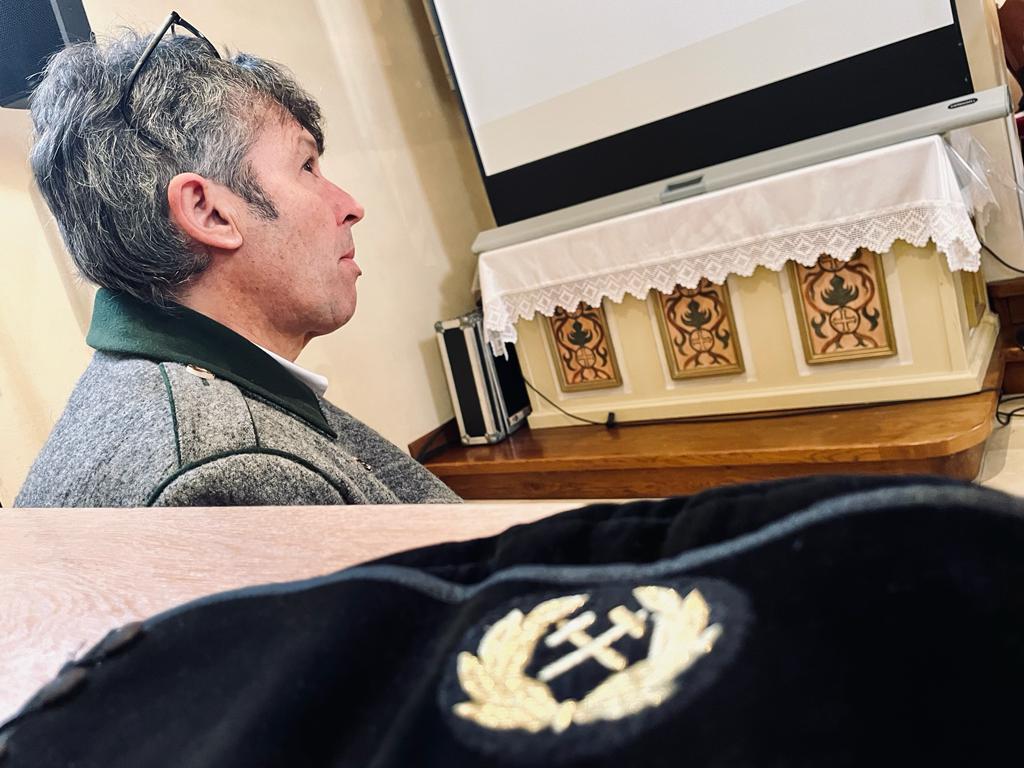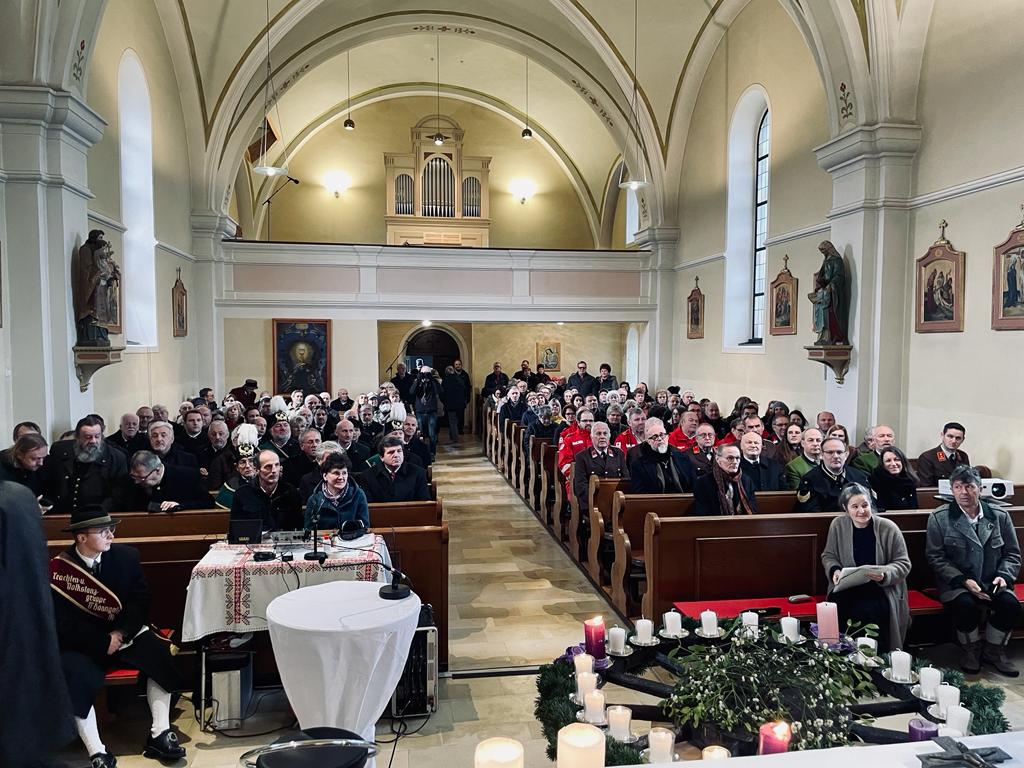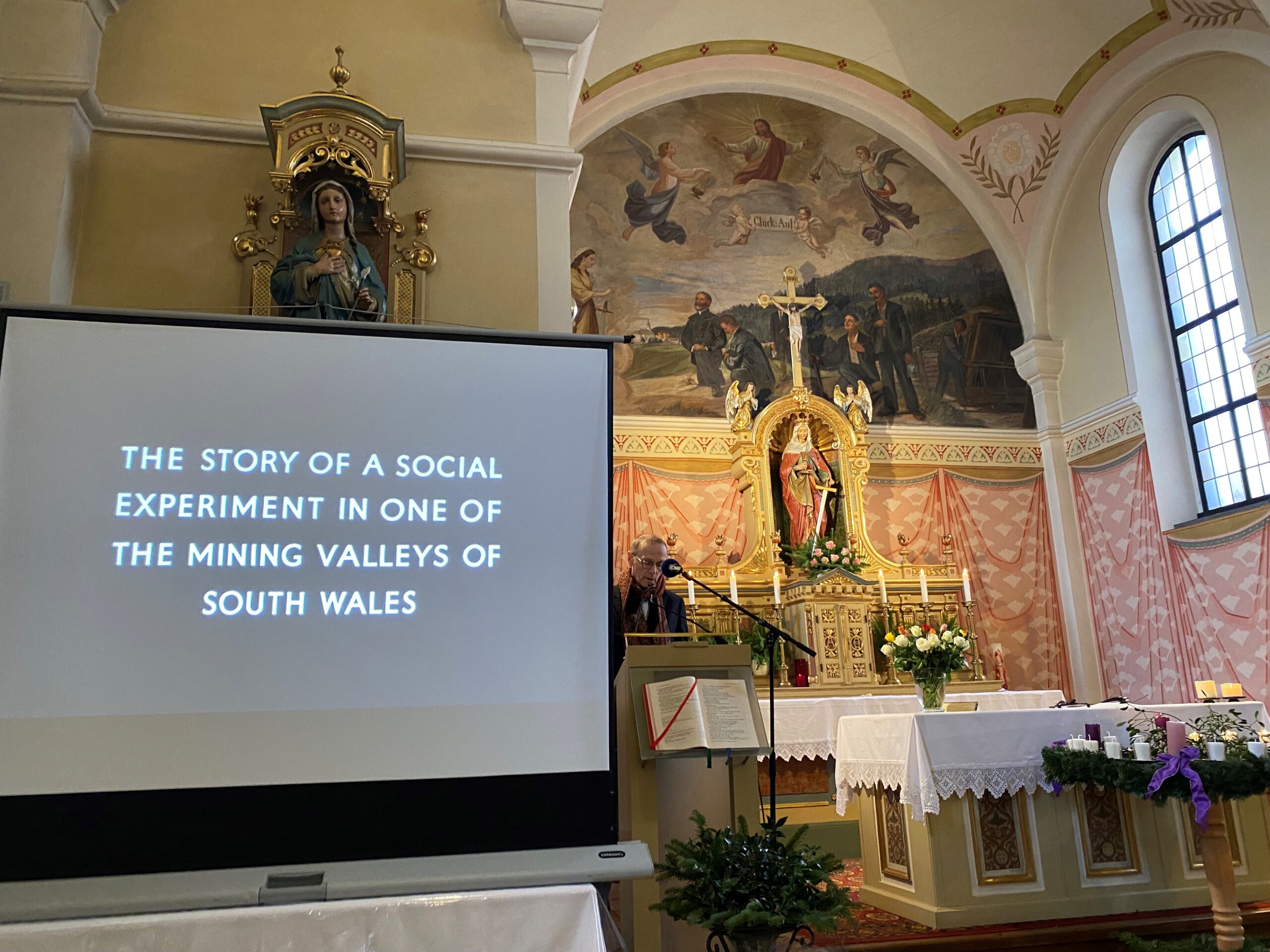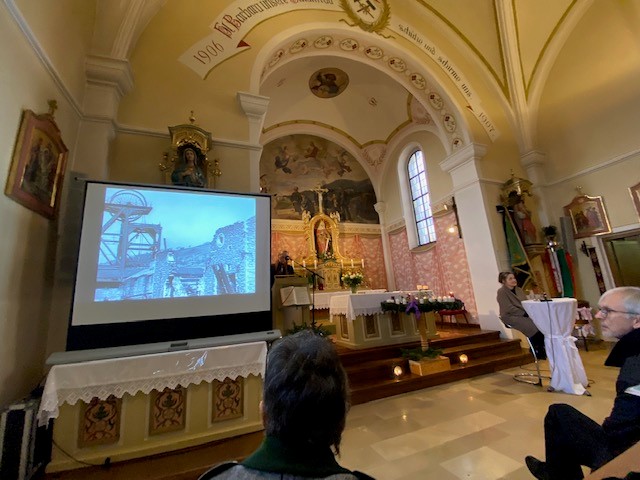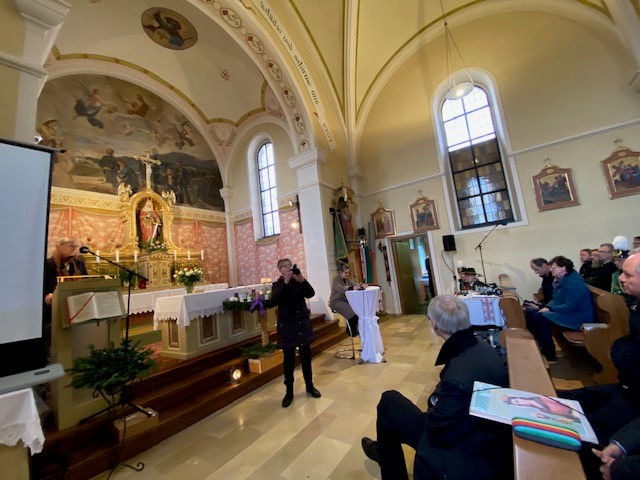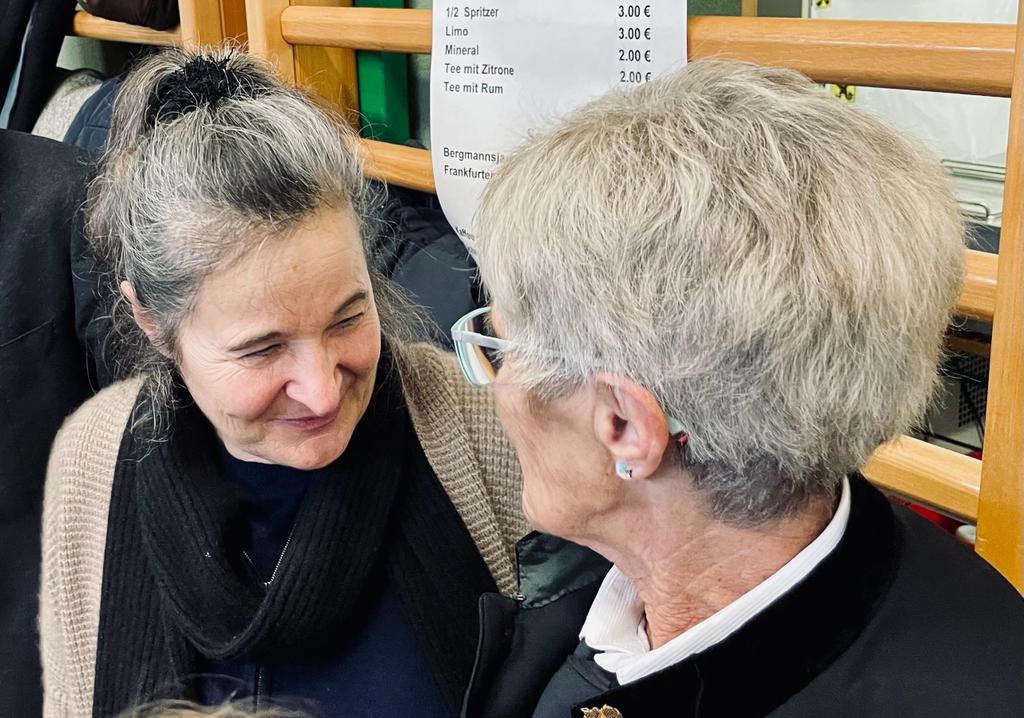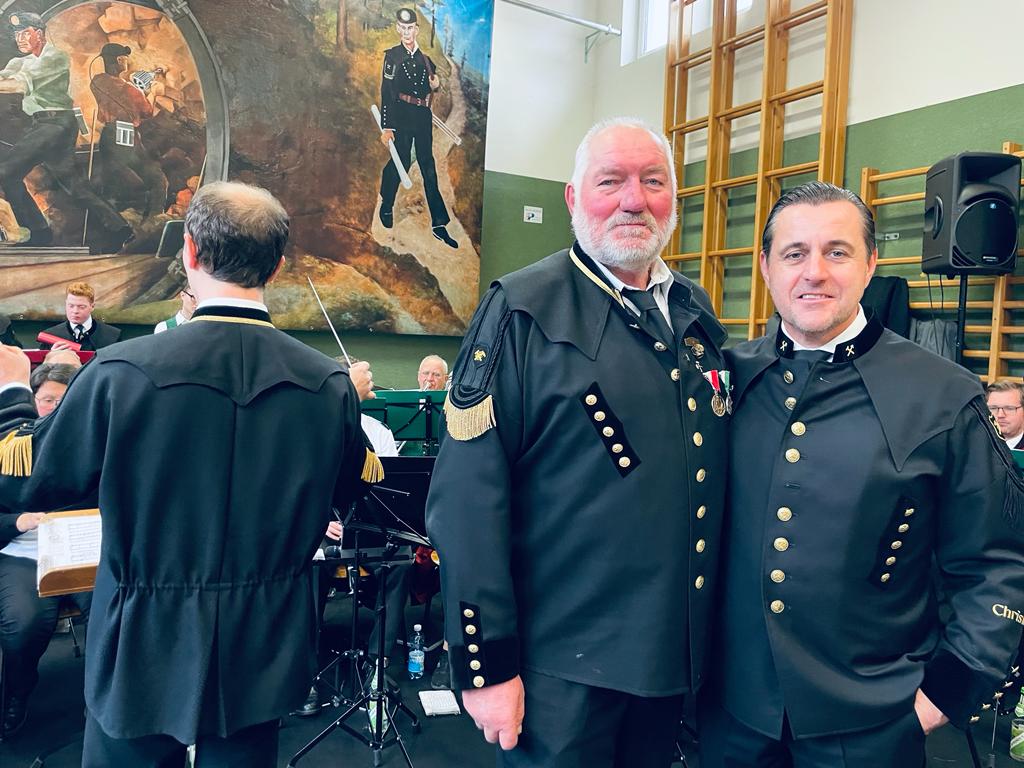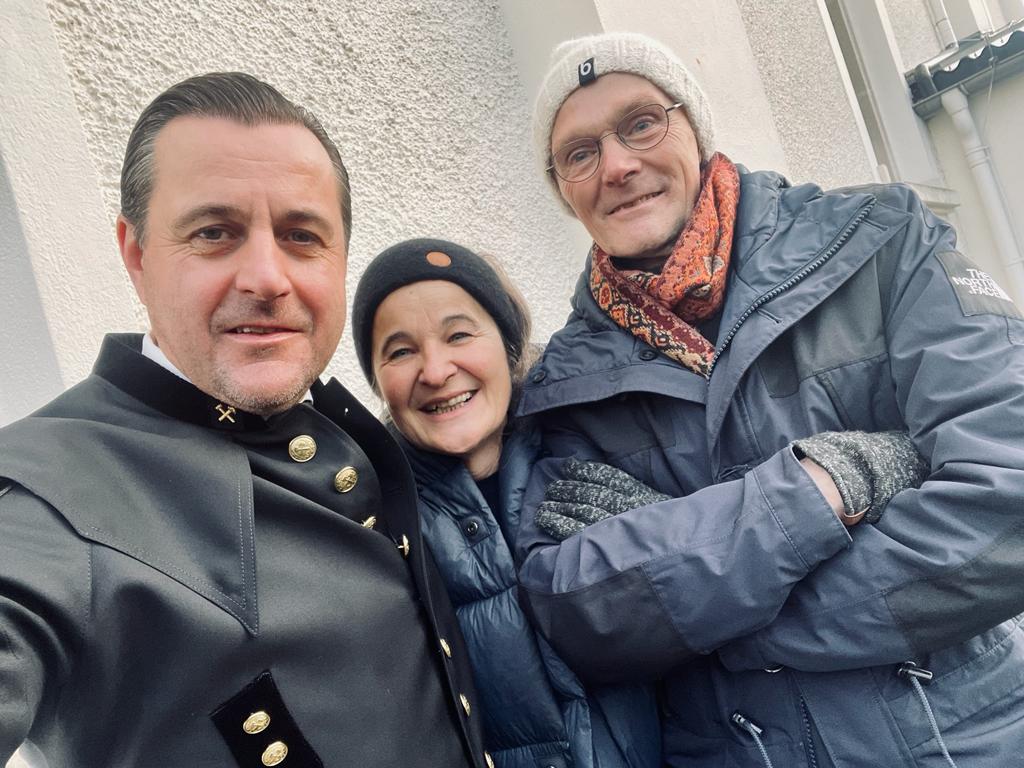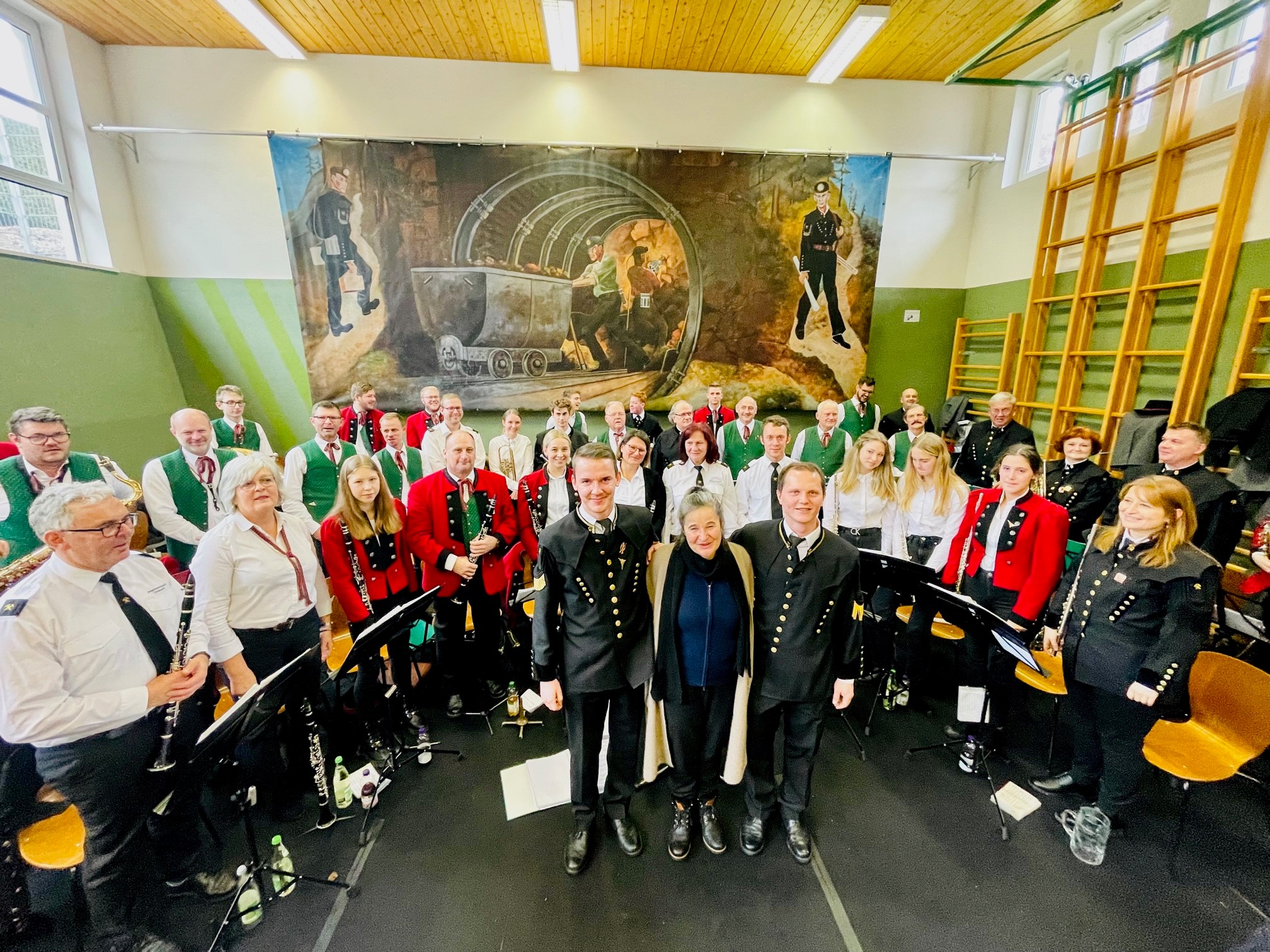In 1906 Thomasroith built the first and so far only church in Upper Austria dedicated to St. Barbara. The patron saint of miners is commemorated every December 4. This year with a reading by the actress Maria Hofstätter from the book “Unemployed at Work”, edited by Prof. Johann Bacher, Dr. Waltraud Kannonier-Finster and Prof. Meinrad Ziegler. In it, Marie Jahoda shows her studies on the decline of mining.
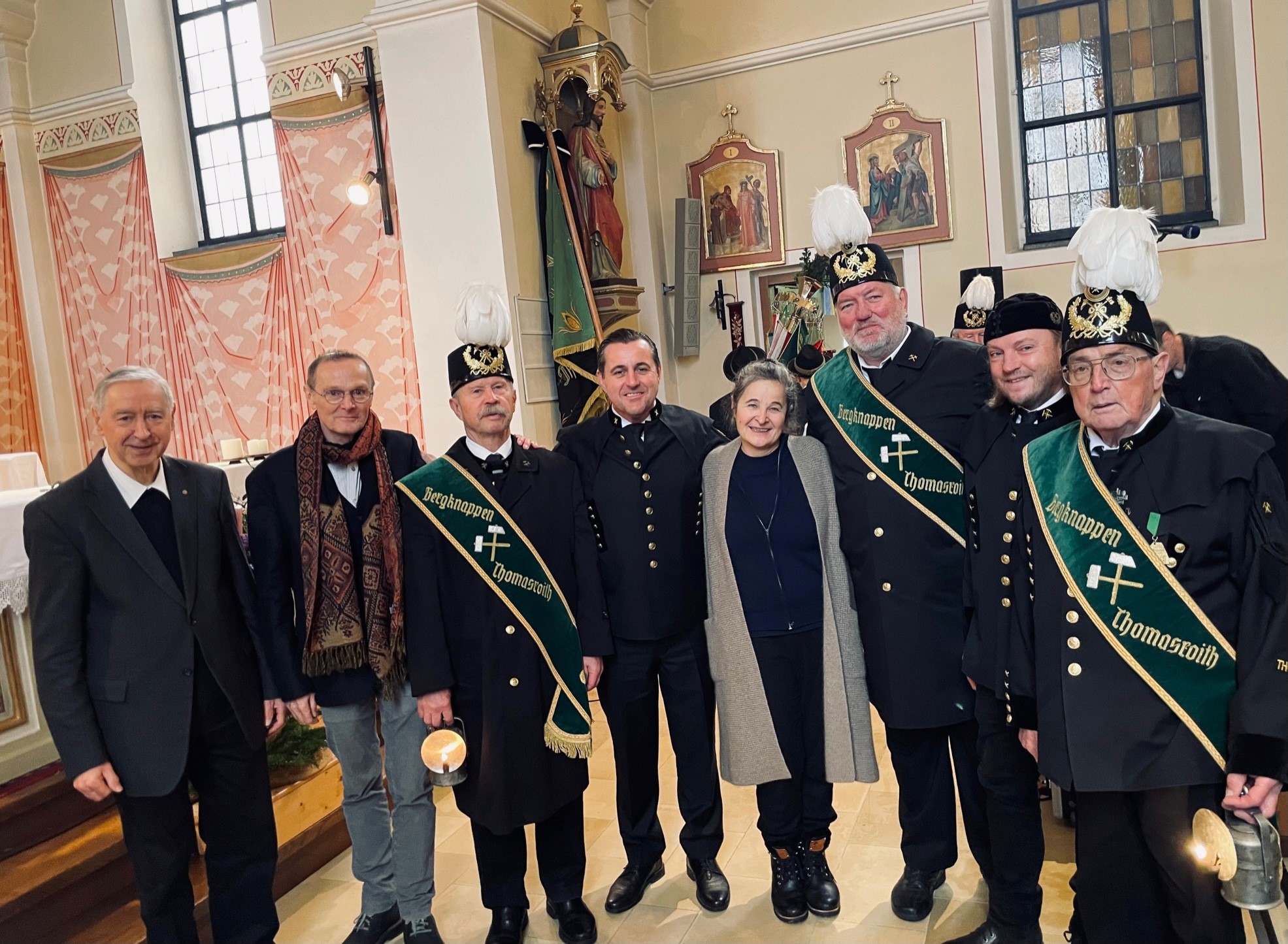
Under the sign of the cronies with St. Barbara & Marie Jahoda
Thomasroith – home parish of tobacco factory director and Urban Miner Chris Müller and the only Upper Austrian village with a consecrated Barbara Church. Here, the tradition of mining is still upheld. Above all on cohesion of the miners one is proud. Thus, every 4th December is also an important day in the community on the Hausruck.
The procession to the town square was led by the Thomasroith miners’ band, followed by the miners’ association under chairman Willi Eckstein, the Plötzenedt fire brigade, the Red Cross team from the Thomasroith local branch and the D’Hoangartler traditional costume association. The laying of the wreath in memory of the dead was traditionally done by Ernst Rinortner on the knocking board. Afterwards it went to the holy mass with KonsR. Mag. Konrad Enzenhofer in the Barbara Church.
Maria Hofstätter reads Marie Jahoda – Unemployed at Work.
A look back in history. The time: the 1930s with the economic crisis that had gripped the whole of Europe. The place: a mining district in Great Britain, in the southern part of Wales: the Eastern Valley. The valley stretches from Cardiff to the north, up into the mountains.
The region was characterized by heavy industry for more than 100 years. Iron ore and coal were mined in a large number of small collieries. Since the 1920s, Welsh industry has suffered from productivity weaknesses. The small operations could not keep up with the modernization of plant and machinery. In the 1930s, the world economic crisis was added to this. High and long-lasting unemployment, impoverishment of the miners’ families were the result.
In 1935, the social organization of the Quakers, a Christian religious community, began a social experiment there to alleviate the effects of unemployment. The miners were invited to organize themselves in a cooperative project. The goal was to produce food and goods for daily use themselves. The association was called “Society for Subsistence Production”; vegetables and fruit were grown, livestock was raised and dairy farming was carried out in various departments on agricultural and small-scale farms for subsistence. A disused brewery was renovated and rebuilt. It served as the headquarters of the association and housed workshops for shoemakers, weavers, tailors, carpenters, butchers and other crafts.
The unemployed continued to receive state support. Their work in the association was not paid in money but in natural goods. The workers could purchase all products in the cooperative store at cost price; since the labor factor played no role in the price calculation, the goods often cost only half of what would have been paid in the stores. In terms of quality, however, the self-produced products were far above those in commercial trade. The organizers attached importance to the fact that the latest machines and equipment were available for the work in all departments. One effect of the project was that the standard of living of the members of the association improved significantly.
In the longer term, the basic idea of the social project was to establish and expand a niche in capitalist commodity production. The project’s own needs for everyday goods, especially food, were to be produced outside and independently of market economy structures in regional and cooperatively organized forms. Social change, the project leaders were convinced, had to come and be organized from below – not via the radical transformation of the social order.
Marie Jahoda was commissioned to conduct a study to accompany the project. The title of her report, completed in 1938, was “Unemployed at Work.” The questions: How is the project perceived by the workers? What contribution could the experiment make to peaceful social change? She saw the most important success of the project as providing organized, collective work for the older men among the unemployed.
Marie Jahoda had taken with her from the Marienthal study the conviction that it falls short to see work only from a material point of view. Marienthal was the first to examine the social and psychological effects of unemployment. Being out of work means loss of social integration, restriction of the ability to act and, in many cases, depression. Only integration into collective work processes can help against this. It provides daily demands, social exchange and the awareness of being needed.
Order at www.studienverlag.at or at your local bookstore.
Hausruck’s brown coal
For more than 200 years, brown coal was mined in the Hausruck communities, thus ensuring a regular income and modest prosperity for the miners and their families. In some places, attempts are also made to keep the history of coal mining in the Hausruck in mind with various show objects, whose arduous work at that time shaped the country and its people.
In Thomasroith, for example, the town square was designed accordingly, a coal trail was created, and in Kohlgrube, visitors can immerse themselves in the history of black gold in their own museum. The tapping board must never be missing from such exhibitions. It used to be the signal instrument with which the miners were alerted and called together.
Barbara sausage & cake
There is something that no Barbara celebration should be without: the traditional Barbara sausages and the heavenly Barbara cake, whose recipe is a well-kept secret. In the sports hall, the guests, including Mayor Peter Helml, former Mayor Friedrich Neuhofer and Member of Parliament Rudolf Kroiß, celebrated together in miner’s overalls and drank a toast.


